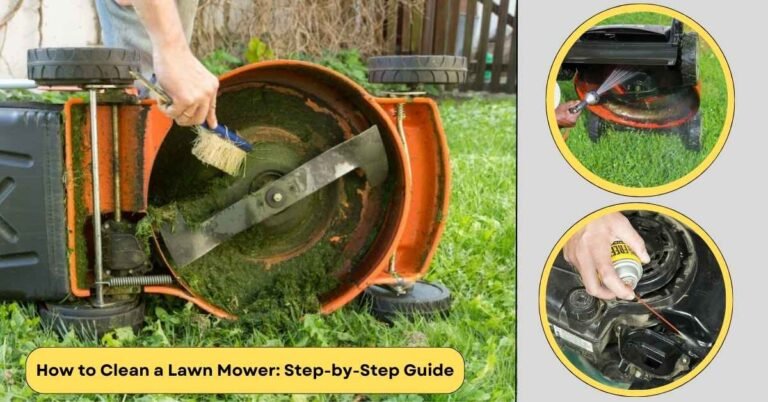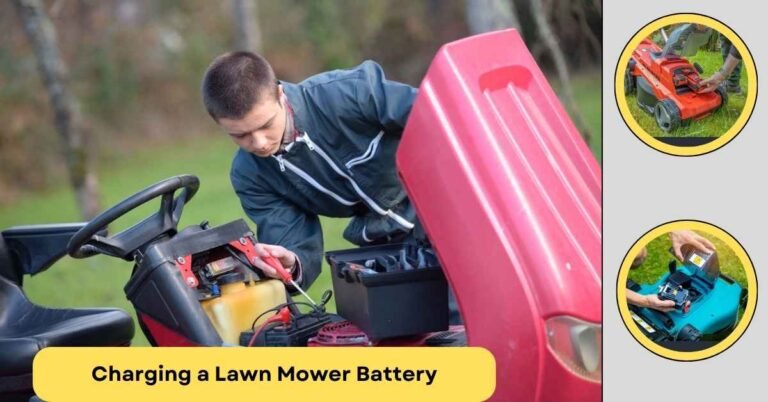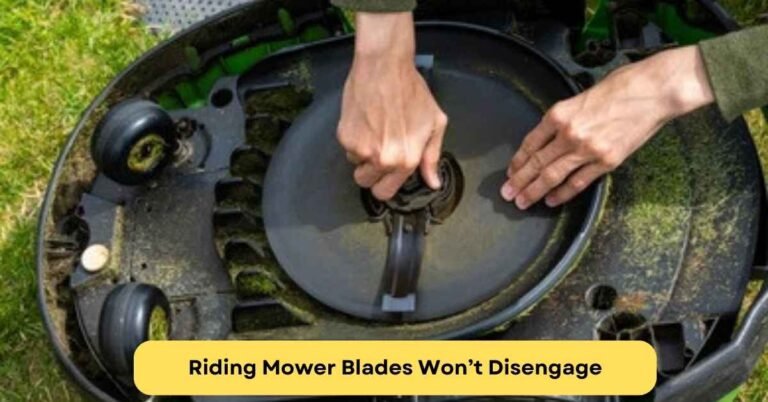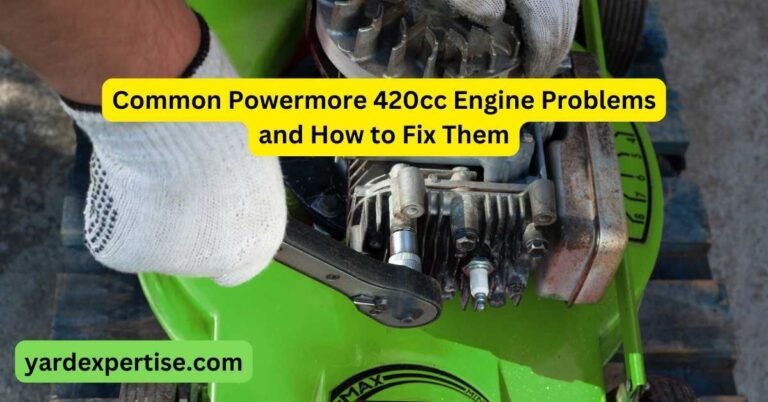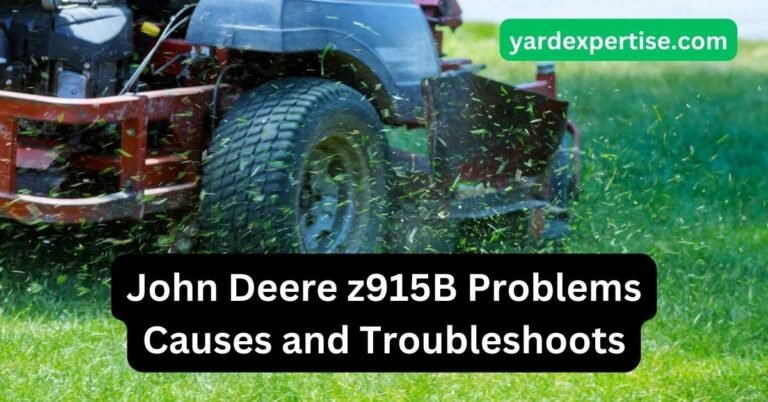Why Are My Mower Blades Hitting Each Other?
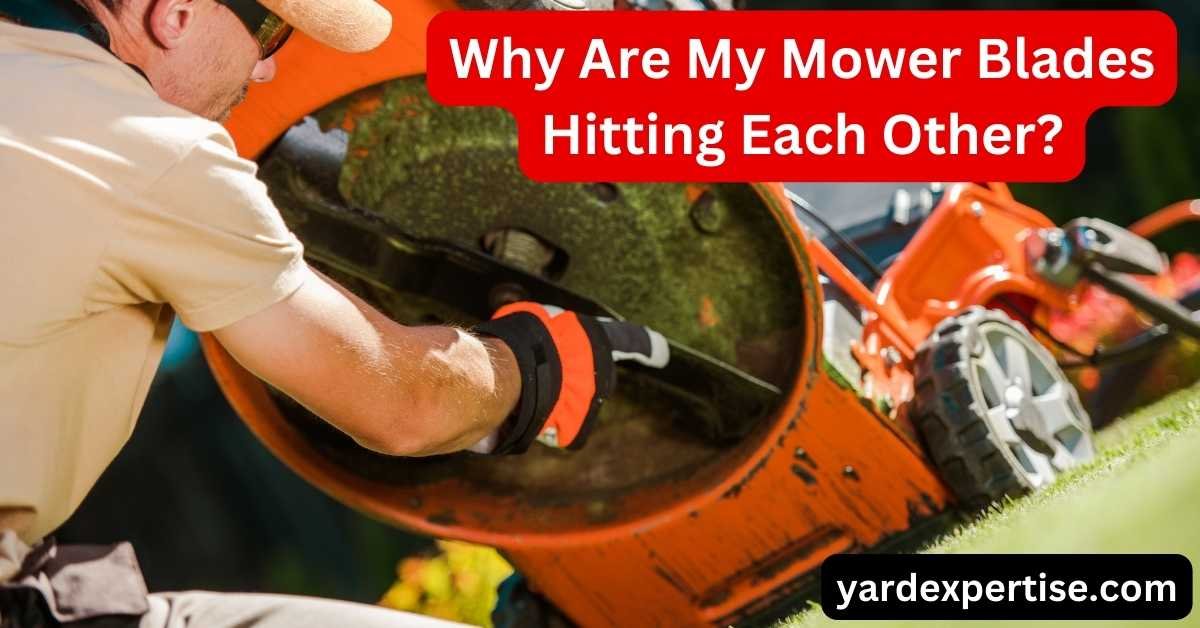
The blades of a lawn mower are sharp metal bars that sit underneath the deck and cut the grass at your desired length. The blades can hit each other while running the machine because of improper blade position, bent blades, debris accumulation, and crooked belt or pulley adjustment. By fixing the blades if they get bent, proper cleaning, and lubrication, you can solve this problem.
What Causes Mower Blades to Hit Each Other?
Dual-blade mowers function with timed belts or pulleys which are prone to wearing and tearing causing the blades to overlap improperly making them collide with each other if the belts malfunction even by a fraction of a second.
Another problem stems from the fact that the two blades sit only centimetres apart, meaning that the most minuscule bends or balance issues might cause unwanted collisions between the blades. At the high speed of 2000-3000 RPM, any undesired collision of the blades might cause irreparable damage to the entire machine.
But with a few easy steps, you can identify the reasons behind your mower blades hitting each other and with some proper guidance, you can solve them by yourself.
Incorrect Installation of Blades
Improper installation of your mower blades could be the main culprit behind your blades clashing with each other. Always make sure to follow the instructions and installation manual of your mower while setting them up.
The blades not only rotate at high speed, but also constantly jerk around due to contact with solid objects like grass, debris, and rocks. These cause the blades to slowly move from their desired position. Tighten the screws properly before you take it out for action. But also keep in mind not to tighten the bolt too tightly as it may create bends on your precious blades. Double-check all the sizes if you are changing the original blades with spare blades
Bent or Damaged Blades
All parts of any machine are subject to wear and tear, especially moving parts like mower blades that are constantly performing under high stress and friction. Small bends on a regular mower might not cause so much trouble but in twin-blade mowers that can be a prominent issue. It is always a wise decision to check your blades for bends and cracks before taking it out for a run.
Not all parts of the blade come into contact with grass or debris at the same rate. This causes a small fraction of the blade’s metal to chip off slowly. The blade will be off balance if one side of the blade loses too much weight relative to the other side. And off-balance blades are an enormous safety hazard. To check if your blades are properly balanced, remove the blade and put the centre on a small block of metal or wood where both sides can go up and down freely. Your blade is off balance if one side goes up and the other side goes down.
Debris Accumulation
Debris such as rock, glass, plastic, metal, dust, rust, and grass getting stuck in your blades or belts is another reason why your blades might hit each other. Keeping your lawn mower clean will help you not only run the machine smoothly on the ground but will also increase the longevity of your mower. Always clean your lawnmower’s blades before and after the operation.
Improper Installation of Belts
Unlike regular lawnmowers, dual blade mowers use a timed pulley system to operate. Although this mechanism comes with superior power, it also brings with it some difficulties. As time goes on, the belts are prone to damage. Their teeth might get loose and the belt might lose traction. The blades will not function properly if there is more or less time delay than desired.
What Are the Solutions of Mower Blades Hitting Each Other
It might seem overwhelming at first to fix a dual blade mower with all of its different parts like the blades and pulleys but it can be done with the right knowledge. Identifying the problem is half the battle and with some proper steps, you can easily stop your mower blades from clashing with each other.
Proper Installation
No machine functions properly without proper installation. Always follow instruction manuals while setting up your mower. The proper installation of the mower blades cannot be overlooked.
Make sure to screw all the bolts in the right places and lubricate the centre bolt. The centre bolt is one of the most significant parts of the mower which holds the blades in the proper place. Any fault in the bolt will cause the blades to run coarsely.
Tighten the centre belt with the right size wrench or socket. Change the bolt if it’s not tightening properly. Different lawn mowers use different size bolts so carefully note what size bolt you require before purchasing a spare bolt. Do not tighten the bolt too tightly as it might cause bends in the blades.
The next step is making sure that your blades are installed properly. The manufacturer will specify the desired distance between the two blades while installing. Maintain this distance while installation and reassembly after cleaning. Check the proper size and classification of your mower blades before buying spare blades.
Be sure to check the proper installation of the belts or pulleys as well. The timed pulley mechanism is fundamental to the proper operation of the mower. Taking out the pulleys and checking them might be difficult in the future, so ensure it’s proper installation before starting your machine.
Regular Blade Inspection
The blades do most of the heavy lifting on a lawn mower, which is also why it is prone to damage. Blades can lose sharpness, get bent, and get chipped if not maintained properly. Regularly check the sharpness and levelness of your blades. Check if your blades are properly balanced on both sides. If it is unevenly balanced, grind or file the heavier side to bring back balance.
Clearing Debris
Lawnmowers run on dirty surfaces with rocks and dirt always coming into contact with the blade and other parts of the mower. The blades will collide with each other if enough debris accumulates between the blades and around the central bolt. Regularly clean the blades with a wire brush. You can buy a wire brush for $2 to $20.
Professional Servicing
A dual-blade lawn mower is significantly more complex than a regular single-blade mower and it sometimes requires professional handling. Depending on the workshop you go to and the damage on your lawn mower, this can cost you from $40 to $200.
How to Prevent Mower Blades Hitting Each Other?
As the wise saying goes, prevention is better than cure. You can keep your blades in pristine condition by following some simple procedure. Handling your machine with care will largely affect its longevity and the quality of its function.
Avoid Mowing Over Hard Objects
Lawn mower blades rotate at an astonishingly high speed of 2000-3000 rpm. Any contact with hard objects like plastic or metal trash, hard rocks, and debris, can cause the blades to bend. This will not only cause your blades to hit each other but also cut grass unevenly. Clean your yard beforehand to avoid such unwanted results.
Adjust Mowing Height According to Grass Length
Blade adjustment is a major factor when it comes to properly handling a dual-blade lawn mower. According to the House Owners Association of America, your lawn grass should be 2 inches to 4 inches (5-10 centimeters) tall.
Taller grass requires setting the blades higher at first and then mowing again with lower settings. Adhere to the instruction guides of your mower manufacturer while adjusting the blades.
Regularly Lubricate Moving Parts
Most wear and tear on machines stem from jerking and lawn mowers are especially prone to this as they are required to run on uneven surfaces. Lubricating the parts that are constantly moving is an effective way to minimize friction and overall jerking, especially under the bolt that keeps the rotating blades in place requires lubrication. The pulleys also run on ball-bearing mechanisms. These parts should also be properly lubricated. Engine lubricants cost somewhere between $8 to $20.
Store the Mower in a Dry and Clean Environment
Like all engines made of metal, the mower is prone to rusting. Rusting is quite unavoidable in the long run but damp places accelerate the rusting process. This can easily be prevented by keeping your mower stored in a secure, dry, and clean environment. Do not let rainwater enter the shed where you are storing the mower. Clean all the mud and dust that sticks to the blade or the body of your mower after usage.
So, clean, grind, and readjust the blades, bolts, and belts and lubricate all moving parts properly to take out your machine for a nice and relaxing weekend morning of mowing, enjoying the smell of freshly cut grass.
